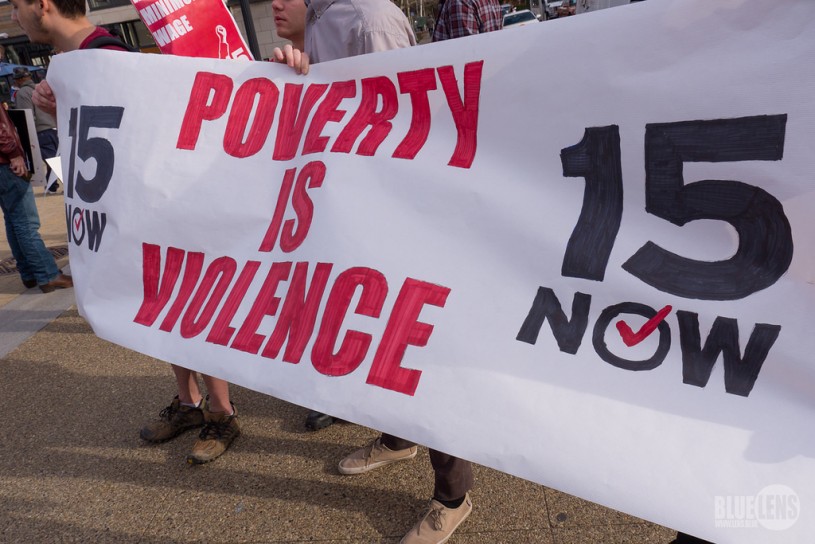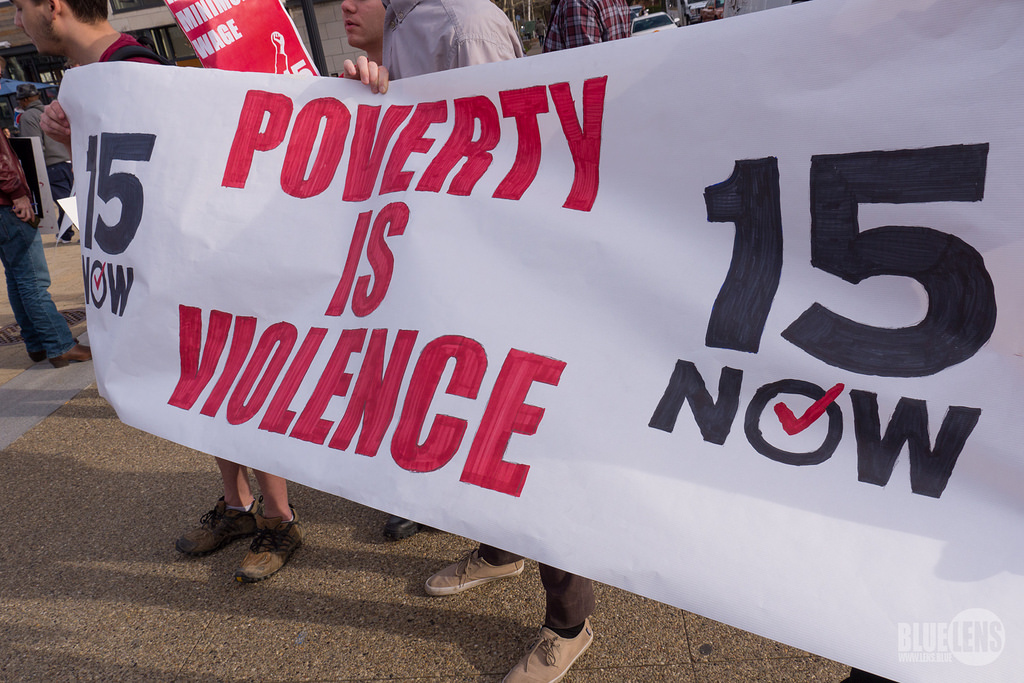
(Image: Flickr / Mark Dixon)
This past Wednesday, tens of thousands of low-wage workers in more than 200 cities across the U.S. demonstrated for a $15 minimum wage and the right to form a union.
Protesters said they chose to demonstrate on 4/15 because the date sounds like “for $15.”
Who joined the protests this week? Everyone from fast food and full service restaurant workers to child and home care workers to Walmart employees, airport workers, and adjunct professors.
Known as the “Fight for 15″ campaign, the highly visible protests on Wednesday were one of the largest organized demonstrations of low-wage workers in U.S. history.
The campaign began in November of 2012 when a couple hundred fast food workers in New York City walked off the job and demanded $15 an hour, which is close to the average cost of living in America.
Since then, Fight for 15 has blossomed into a broad-based movement of low-wage workers from multiple industries alongside community organizations, faith groups, and other social justice advocates demanding social, economic, and racial justice.
In Wednesday’s protests in Manhattan, for example, activists from the Black Lives Matter movement joined the Fight for 15 chanting, “We can’t breathe on $7.25.” On college campuses, students concerned about rising student loan debt joined in solidarity with adjunct faculty and other low-wage workers. And this year,child care workers joined the Fight for 15 for the first time.
The solidarity expressed this week in the Fight for 15 has reached new heights and is well timed with a presidential race on the horizon.
Despite overwhelming support for raising the current federal minimum wage of $7.25, Congress has stalled on the issue. And the public is poised to continue pushing for an increase as several new widely publicized reports reveal that the ordinary taxpayers are subsidizing the low-wage model of employment.
For instance, a study issued by the UC Berkeley Center for Labor Research and Education found that 56 percent of all state and federal public assistance goes to working Americans. Another report issued this week by the Restaurant Opportunities Centers United found that nearly half of restaurant workers rely on public assistance to meet their family’s basic needs.
How much does all that add up to? According to the Berkeley study, ordinary American taxpayers are dishing out $152.8 billion each year in public support for working families.
In many ways the Fight for 15 is at the heart of the national debate about inequality. The movement has changed the conversation and prompted major corporations like Walmart, McDonald’s, and Target to announce wage increases. The Fight for 15 has also called attention to the concentration of wealth at the top of the economic ladder while ordinary workers struggle to get by.
As the 2016 presidential race heats up, candidates on both sides of the aisle should pay attention. If Wednesday’s protests are any indication, the Fight for 15 is a movement that no candidate can afford to ignore.
